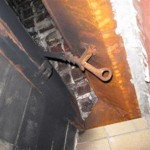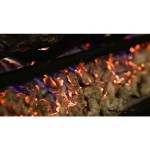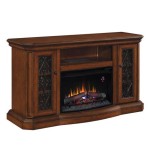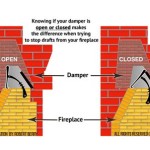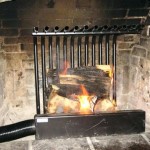Mantels for Electric Fireplaces: Style, Functionality, and Installation
Electric fireplaces have rapidly gained popularity as a convenient, cost-effective, and aesthetically pleasing alternative to traditional wood-burning or gas fireplaces. One of the key elements that elevates the visual appeal of an electric fireplace is the mantel. A mantel not only serves as a decorative focal point but also provides functional benefits such as additional storage space and a platform for displaying cherished items. This article explores the various aspects of mantels for electric fireplaces, covering design considerations, material choices, installation techniques, and safety precautions.
Understanding the Role of an Electric Fireplace Mantel
The primary function of a fireplace mantel is to frame the firebox, creating a defined visual anchor within a room. For electric fireplaces, the mantel fulfills this aesthetic role while offering additional advantages. It can conceal wiring and outlets, thereby maintaining a clean and organized appearance. Furthermore, a mantel provides a surface for decorating with picture frames, candles, vases, and other decorative objects, allowing homeowners to personalize their living space. The size and style of the mantel should complement the overall design of the room and harmonize with the electric fireplace insert.
Beyond aesthetics, mantels can contribute to the functionality of the fireplace setup. Some mantels incorporate shelving or cabinets, offering valuable storage space for media components, books, or other household items. This added storage can be particularly beneficial in smaller rooms where space is limited. The design of the mantel can also influence the perceived depth and dimension of the electric fireplace, creating a more substantial and inviting presence.
The compatibility between the electric fireplace and the mantel is crucial. Electric fireplaces generate heat, although typically much less than traditional fireplaces. The mantel must be constructed of materials that can withstand moderate heat exposure without warping, cracking, or discoloring. It is essential to adhere to the manufacturer's specifications regarding clearances and installation guidelines to ensure safe and efficient operation.
Exploring Mantel Materials and Styles
The selection of materials for an electric fireplace mantel significantly impacts its appearance, durability, and cost. Common mantel materials include wood, MDF (medium-density fiberboard), stone, and metal. Each material offers unique characteristics and aesthetic qualities.
Wood mantels are a classic choice, offering warmth, versatility, and a natural aesthetic. Different types of wood, such as oak, pine, maple, and cherry, provide varying grain patterns and color tones. Wood mantels can be stained, painted, or left unfinished to match the surrounding decor. Solid wood mantels tend to be more expensive but offer superior durability and longevity. Engineered wood products, like MDF, are often a more affordable alternative and can be designed to mimic the look of solid wood.
MDF mantels are a popular option due to their affordability, ease of fabrication, and resistance to warping and cracking. MDF provides a smooth, paintable surface, allowing homeowners to customize the mantel's color and finish. However, MDF is less resistant to moisture than solid wood and may not be suitable for environments with high humidity.
Stone mantels offer a more substantial and elegant appearance. Natural stone, such as granite, marble, and limestone, can add a touch of luxury and sophistication to any room. Stone mantels are durable, heat-resistant, and relatively low-maintenance. However, they are typically more expensive and heavier than wood or MDF mantels. Faux stone mantels provide a more affordable alternative, replicating the look of natural stone using lightweight materials.
Metal mantels, often crafted from steel or wrought iron, offer a modern and industrial aesthetic. Metal mantels are durable, heat-resistant, and can be powder-coated in various colors and finishes. They are often paired with contemporary electric fireplace designs to create a sleek and minimalist look.
In terms of style, mantels can range from traditional to contemporary, reflecting diverse architectural preferences. Traditional mantels often feature ornate carvings, intricate moldings, and classic architectural details. Contemporary mantels tend to be simpler in design, with clean lines, minimalist profiles, and a focus on functionality. Transitional mantels blend elements of both traditional and contemporary styles, offering a balanced and versatile aesthetic.
The choice of mantel style should complement the overall design of the room and the electric fireplace insert. A rustic wood mantel may be ideal for a country-style living room, while a sleek metal mantel may be more appropriate for a modern loft apartment. It is essential to consider the existing furniture, color palette, and architectural features when selecting a mantel style.
Installation Considerations and Safety Precautions
Proper installation of an electric fireplace mantel is crucial for both safety and aesthetics. It is essential to follow the manufacturer's instructions carefully and to adhere to all applicable building codes and regulations. Before beginning the installation process, it is important to gather the necessary tools and materials, including a level, drill, screws, anchors, and measuring tape.
The first step in the installation process is to determine the desired location of the mantel. Consider the size and shape of the electric fireplace insert and ensure that the mantel is properly centered and aligned. Use a level to ensure that the mantel is installed straight and plumb. It is also important to consider the height of the mantel. A general guideline is to install the mantel so that the top of the firebox is at eye level when seated.
Once the location of the mantel has been determined, the next step is to attach it to the wall. Depending on the type of wall construction, different types of anchors and fasteners may be required. For drywall walls, it is essential to use appropriate drywall anchors to provide adequate support. For masonry walls, such as brick or concrete, masonry anchors should be used. It is important to pre-drill pilot holes before inserting screws to prevent the wood from splitting or cracking.
After the mantel has been securely attached to the wall, it is important to conceal any visible screws or fasteners. This can be accomplished by using wood filler or caulk to fill the holes and then painting or staining the mantel to match the surrounding decor. It is also important to ensure that all wiring and electrical connections are properly concealed and protected.
Safety is paramount when installing and using an electric fireplace mantel. It is essential to maintain adequate clearance between the electric fireplace and any combustible materials, such as curtains, furniture, or paper. The manufacturer's instructions will specify the minimum clearances required. It is also important to avoid placing flammable objects, such as candles or aerosols, directly on the mantel. Overloading the electrical circuit with too many appliances can also pose a safety hazard. Always use surge protectors and follow the manufacturer's recommendations regarding power consumption.
Regular maintenance is essential for ensuring the longevity and performance of an electric fireplace mantel. Dust the mantel regularly with a soft cloth to prevent the buildup of dirt and debris. Clean any spills or stains immediately to prevent them from setting. Inspect the mantel periodically for any signs of damage, such as cracks, warping, or discoloration. If any damage is detected, it should be repaired promptly to prevent further deterioration.
In summary, selecting and installing a mantel for an electric fireplace requires careful consideration of various factors, including material choices, style preferences, installation techniques, and safety precautions. By adhering to these guidelines, homeowners can enhance the aesthetic appeal of their living space while ensuring the safe and efficient operation of their electric fireplace. The mantel serves as a focal point, adding warmth, character, and functionality to any room. Proper installation and maintenance will ensure that the mantel provides years of enjoyment and enhances the overall ambiance of the home.

Ameriwood Home Elmdale Wide Mantel With Linear Electric Fireplace Plaster Com

ᑕ❶ᑐ Electric Fireplaces And Rustic Mantels Finding The Best Match

Electric Fireplace Mantels Real Flame

Sofia Cambridge 57 In Modern Electric Fireplace Mantel With Led Multi Color Faux Charred Log Display Insert White Marble Heating For Living Room Dining Bedrooms Up To 210 Sq Ft

Cambridge Sofia 57 In Indoor Freestanding Electric Fireplace Mantel With Led Insert And Remote Com

Electric Fireplace Mantels Real Flame

Dimplex Royce 52 In Mantel Smoke Stak Grey With 28 Electric Fireplace Logs Gds28l8 1924sk The Home Depot

Electric Fireplace Mantle Diy She Holds Dearly

Electric Fireplace Mantels Dimplex

ᑕ❶ᑐ Electric Fireplaces And Rustic Mantels Finding The Best Match

